What's New
Displaying results 1871 - 1880 of 4052
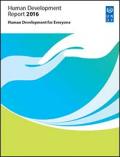
Resource | Publications,
The 2016 Human Development Report focuses on how human development can be ensured for everyone—now and in the future. It starts with an account of the achievements, challenges and hopes for human progress, envisioning where humanity wants to go. Its vision draws from and builds on the 2030 Agenda for Sustainable Development that the 193 member states of the United Nations endorsed last year and the 17 Sustainable Development Goals that the world has committed to achieve.
The Report explores who has been left out in the progress in human development and why. It argues that to ensure human development for everyone, a mere mapping of the nature and location of deprivations is not enough. Some aspects of the human development approach and assessment perspectives have to be brought to the fore. The Report also identifies the national policies and key strategies that will enable every human being to achieve basic human development and to sustain and protect the gains. And addressing the structural challenges of the current global system, it presents options for institutional reforms.
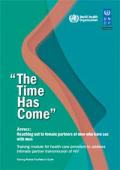
Resource | Tools,
This training aims to impart practical knowledge and skills to health workers across Asia. Evidence indicates that substantially different HIV prevention challenges are posed by men who have sex only with other men, compared to men who have sex with men and women. These two groups are unlikely to respond to the same prevention messages and advice. This training module focuses specifically on reaching out to the female partners of MSM. As such, the module builds on the existing training package for health care providers developed by UNDP and the World Health Organization (WHO) in 2013. The UNDP/WHO regional training package, entitled “The Time Has Come”, aims to reduce stigma in health care settings and to enhance HIV, sexually transmitted infections (STI) and other sexual health services for MSM and transgender people in Asia and the Pacific.
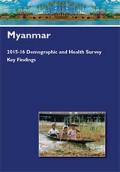
Resource | Publications,
The Myanmar Demographic and Health Survey (MDHS) is designed to provide data for monitoring the population and health situation in Myanmar. The 2015-16 MDHS is the first Demographic and Health Survey conducted in Myanmar, and the objective of the survey was to provide reliable estimates of fertility levels, marriage, fertility preferences, awareness and use of family planning methods, breastfeeding practices, nutrition, maternal and child health and mortality, awareness and behavior regarding HIV/AIDS and other sexually transmitted infections (STIs), and other health-related issues such as smoking and knowledge of tuberculosis that can be used by program managers and policymakers to evaluate and improve existing programs.
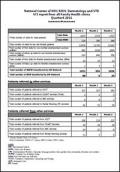
Resource | Publications,
National Center of HIV/AIDS, Dermatology and STD: STI Report from All Family Health Clinics

Resource | Publications,
This package of seven evidence-based strategies builds on growing evidence that violence against children is preventable, and on a growing public consensus that it will no longer be tolerated. The package will help unify multisectoral efforts to raise awareness that, although levels of violence vary within and between countries, no society is immune as violence against children is everywhere, and it will encourage deeper engagement to prevent it and to treat the harmful consequences when it does occur.
The package is anchored in recognition by the Convention on the Rights of the Child that all children have the right to be free from all forms of violence. It also responds to the extensive and costly impacts that violence against children has on public health and development. It is an essential tool to help achieve Sustainable Development Goal Target 16.2, which calls for ending all forms of violence against children.
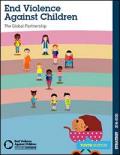
Resource | Publications,
This 'Strategy' paper tells the story of what the Global Partnership to End Violence Against Children plans to do in the next few years.
Because the Global Partnership and Fund to End Violence is committed to including children in its work, we present this child-friendly version of the Partnership Strategy.
Every child has the right to a childhood free from violence – and every society has reasons to protect its youngest members. Children who grow up protected and cherished are more likely to lead healthy, fulfilling lives. They are more likely, more able and more willing to take on the job of guiding their societies – and our shared world – to a more just and healthy future.
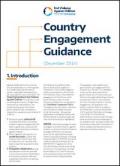
Resource | Publications,
This guidance note explains how governments can engage with End Violence as a 'Partner' or a 'Member'. It sets out the steps required for governments who choose to become Partners through pathfinding and what is expected of them. It also explains the role of the Secretariat in country engagement. The guidance note builds on earlier drafts of Guidance for Pathfinder Countries (November 2015) and the End Violence Strategy (July 2016). It is informed by experiences in countries over the past several months and was developed in consultation with, and approved by, the End Violence Executive Committee. It will be updated periodically based on experience and new evidence.
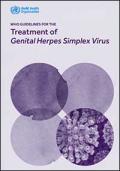
Resource | Guidelines,
Sexually transmitted infections (STIs) are a major public health problem worldwide, affecting quality of life and causing serious morbidity and mortality. STIs have a direct impact on reproductive and child health through infertility, cancers and pregnancy complications, and they have an indirect impact through their role in facilitating sexual transmission of human immunodeficiency virus (HIV) and thus they also have an impact on national and individual economies. More than a million STIs are acquired every day.
Since the publication of the World Health Organization (WHO) Guidelines for the management of sexually transmitted infections in 2003, changes in the epidemiology of STIs and advancements in prevention, diagnosis and treatment necessitate changes in STI management. These guidelines provide updated treatment recommendations for genital Herpes simplex virus (HSV) infection based on the most recent evidence; they form one of several modules of guidelines for specific STIs.
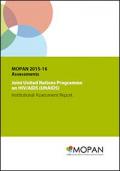
Resource | Publications,
The Multilateral Organisation Performance Assessment Network (MOPAN) is a network of donor countries with a common interest in assessing the effectiveness of multilateral organisations.
This institutional assessment of UNAIDS (specifically its Secretariat) covers the period from 2014 through mid-2016. Applying the MOPAN 3.0 methodology, the assessment considers organisational systems, practices and behaviours, as well as the results UNAIDS achieves. The assessment considers five performance areas: four relate to organisational effectiveness (strategic management, operational management, relationship management and performance management) and the fifth relates to development effectiveness (results). It assesses UNAIDS’s performance against a framework of key indicators and associated micro-indicators that comprise the standards that characterise an effective multilateral organisation, and gives an overview of its performance trajectory. MOPAN last assessed UNAIDS in 2012.
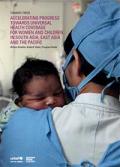
Resource | Publications,
In pursuing Universal Health Coverage (UHC), countries aim to extend coverage of quality health services to all people and to protect them from the risk of financial hardship when paying for them. Achieving a UHC system is as much a political process as a technical one. More and more countries are moving towards publicly financed health care systems that cover the whole population for essential health services, enabling them to reduce preventable illness and death, particularly in women and children. Using public financing, countries can allocate resources equitably to respond to their burden of disease, optimise health outcomes, boost economic growth and strengthen accountability to citizens.
All countries can make progress wherever they are on the UHC journey. This paper reviews lessons learned from across Asia and the Pacific using a literature review and interviews with key informants to identify best practices, challenges and opportunities to further advance UHC.





